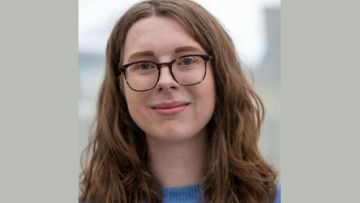PERFORMANCE OF ROBUST HEDGES FOR DIGITAL DOUBLE BARRIER OPTIONS
OBŁÓJ, J
ULMER, F
Finance at Fields
521-554
(10 Dec 2012)
Joint Modelling and Calibration of SPX and VIX by Optimal Transport
Guo, I
Loeper, G
Obłój, J
Wang, S
(01 Jan 2020)
Incorporating pushing in exclusion process models of cell migration
Yates, C
Parker, A
Baker, R
A free boundary model of epithelial dynamics
Baker, R
Parker, A
Simpson, M
Thu, 07 Mar 2024
11:00 -
12:00
C3
Model theory of Booleanizations, products and sheaves of structures
Jamshid Derakhshan
(University of Oxford)
Abstract
I will talk about some model-theoretic properties of Booleanizations of theories, subdirect products of structures, and sheaves of structures. I will discuss a result of Macintyre from 1973 on model-completeness, and more recent results jointly with Ehud Hrushovski and with Angus Macintyre.
Oxford Mathematician Katherine Benjamin has won the Silver Medal for Mathematical Sciences at the 2024 STEM for BRITAIN poster competition held in the House of Commons on March 4th. Katherine was among 20 researchers in mathematics presenting their work to politicians and a panel of expert judges.
An Analysis of One- and Two-Dimensional Patterns in a Mechanical Model for Morphogenesis
Maini, P
Murray, J
Oster, G
Nonlinear Oscillations in Biology and Chemistry
volume 66
46-65
(1986)
Oscillations in biology AlbertGoldbeterBiochemical Oscillations and Cellular Rhythms: the molecular basis of periodic and chaotic behaviour1996Cambridge University Press0 521 40307 3£70.00/US$99.95 (629 pages)
Maini, P
Trends in Biochemical Sciences
volume 21
issue 10
403
(Oct 1996)
Mathematical models in morphogenesis
Maini, P
Mathematics Inspired by Biology
volume 1714
151-189
(09 Oct 1999)
Applications of Mathematical Modelling to Biological Pattern Formation
Maini, P
Coherent Structures in Complex Systems
volume 567
205-217
(22 May 2001)


